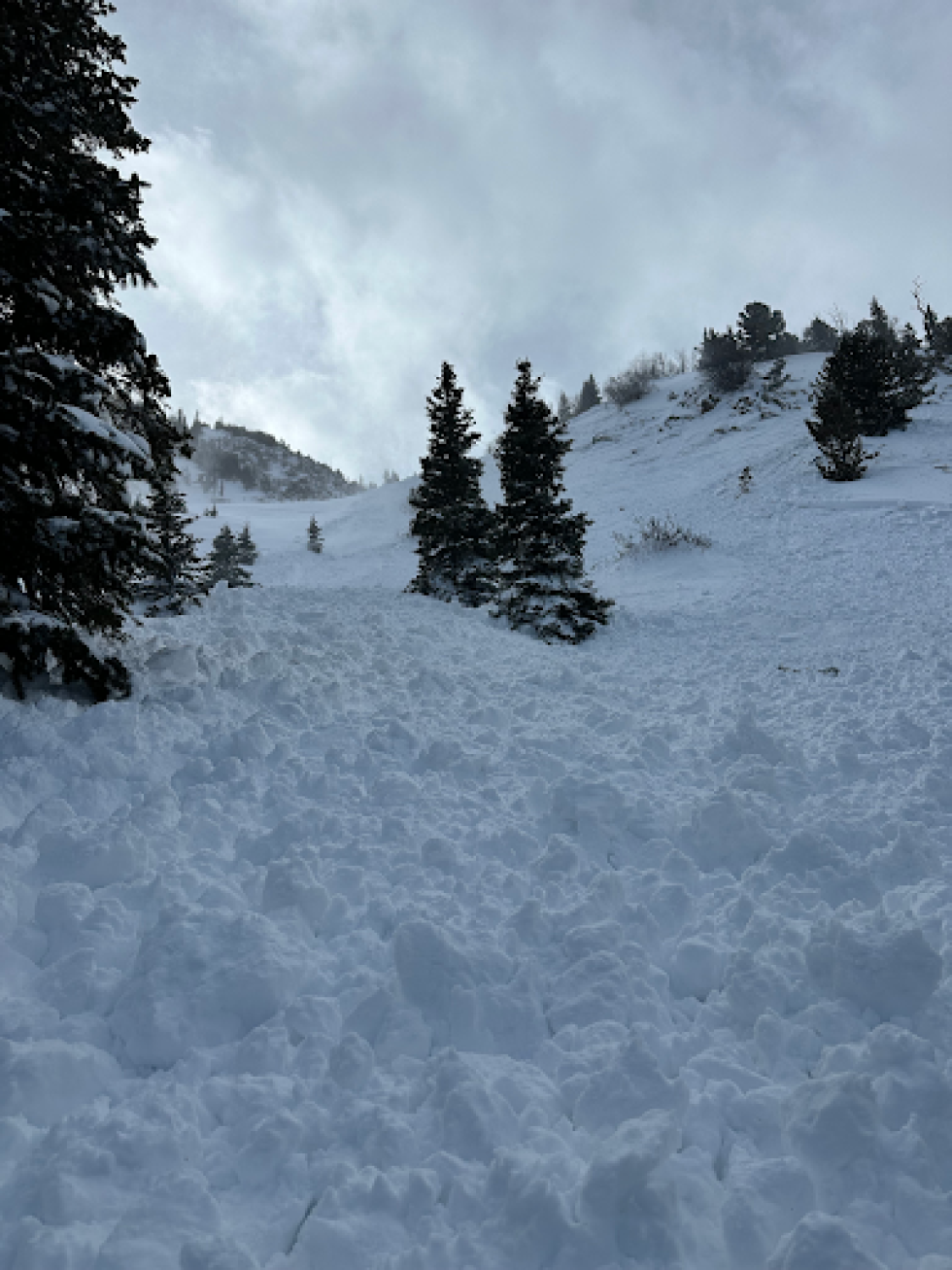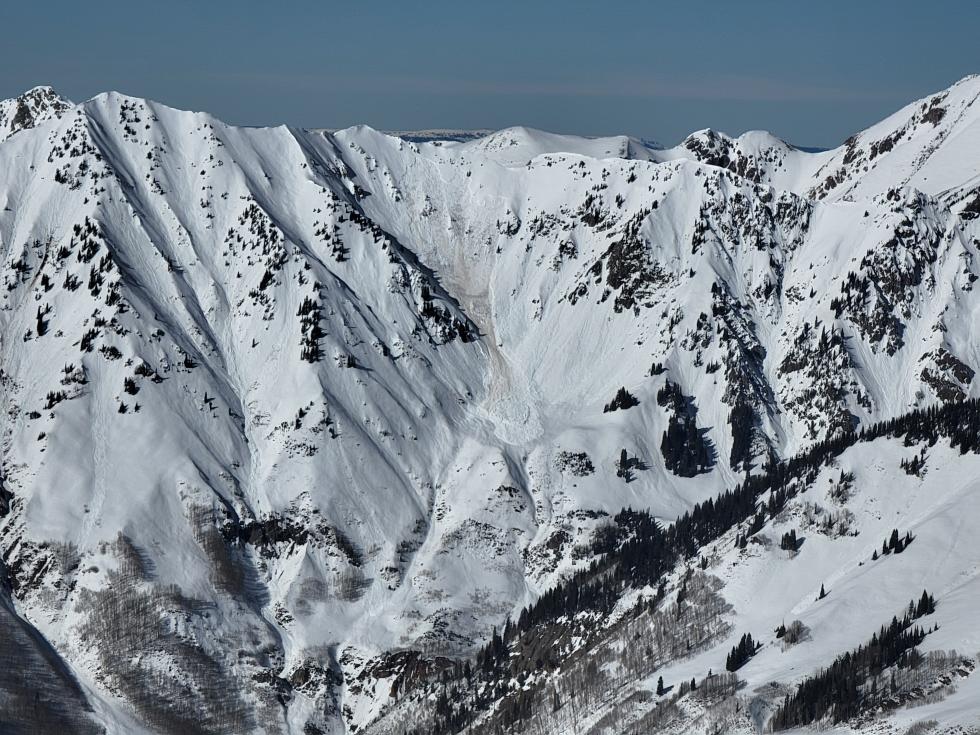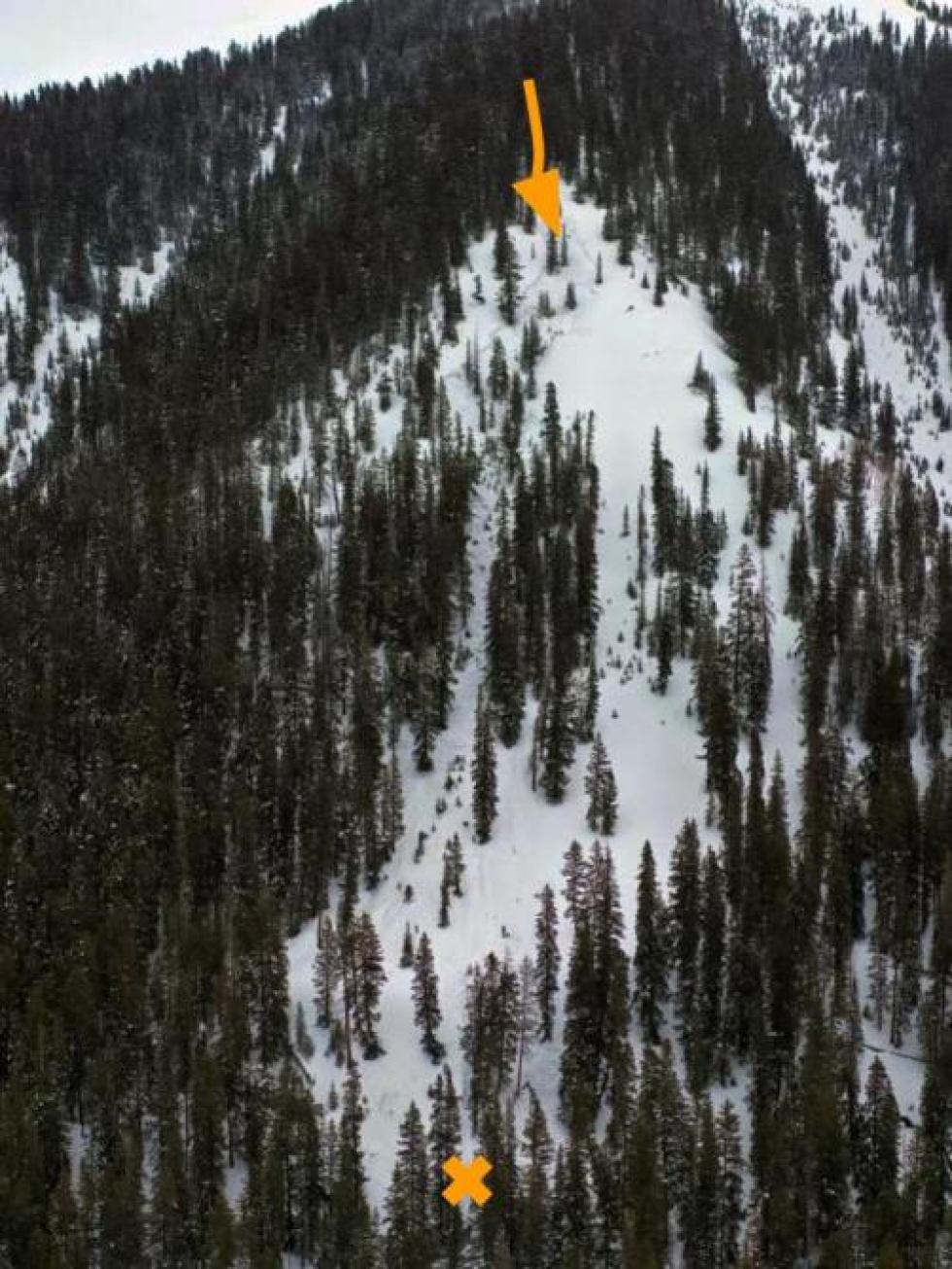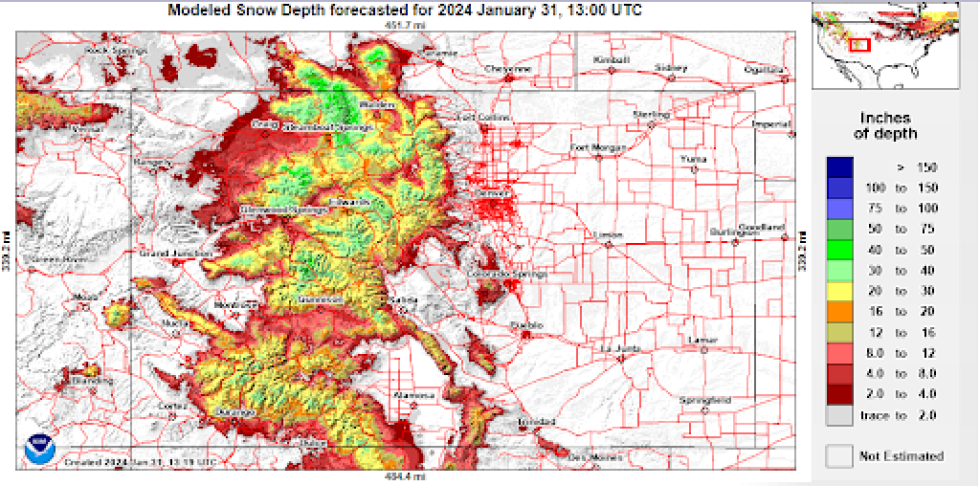January 2024 Summary
Summary
At the start of January, snow depths were well below normal throughout much of Colorado and the Western US. Unusual for mid-winter, the avalanche danger throughout the state was LOW (1 of 5). The snowpack was shallow and composed of very weak faceted snow with no overlying slab. Things changed starting January 4, when the month’s stormiest period began, doubling the snowpack in places as storms continued through January 18. This stormy period produced a spike in avalanche activity: There were 1882 avalanches recorded during the month of January. Almost a third of all avalanches reported during this period were large enough to bury, kill, or injure a person (D2 or larger). There were many close calls in January with 20 people caught in 17 incidents. Tragically, Colorado’s first fatality occurred on January 22 near the town of Ophir in the Southern Mountains.
Dry Start
January had a very dry start with below-average snowfall statewide. The dry period led to a mostly faceted snowpack, and we saw LOW (1 of 5) avalanche danger to start the New Year. Although we had plenty of weak snow, most places did not have a slab–a key component to avalanches. Things changed drastically as a prolonged storm cycle began on January 4.
January 4-18 Storm Cycle
The stormy period more than doubled the snowpack in some places, bringing anywhere from 3.5 to 10 feet of new snow to the mountains. The first few storms arrived on southerly flow and favored the Southern Mountains through January 10. That changed January 10 until the storm cycle ended on January 18 as the wind direction shifted to northwesterly, and the moisture stream favored the Northern and Central Mountains. The new snow fell on a shallow, weak snowpack and created very dangerous avalanche conditions on all aspects and elevations. For a detailed description of this storm period, check out this blog post summarizing it in depth.
Largest avalanche cycle of the season.
From January 4-18, a total of 1441 avalanches were recorded. Of these, 32% were D2 or larger (large enough to bury, kill, or injure a person). During the stormy period, 12 people were caught in avalanches with 5 partial burials and 3 injuries.
Second Half of January
After January 18, a few weather disturbances brought light snow across the state but nothing more than a few inches. Temperatures started to rise to above freezing on January 27, starting in the Southern Mountains and working its way north to finish out the month. Warming temperatures triggered another avalanche cycle. Observers reported 134 avalanches in the last five days of the month: 76% (102) were recorded on southerly-facing aspects. Of the avalanches reported during this period, 28% (37) rated D2 or larger.
Close calls and accidents
On January 22, near the town of Ophir in Southern Colorado, a solo backcountry rider was caught, carried, partially buried, and passed away due to injuries sustained in the avalanche and environmental factors. This is the first avalanche fatality in the state of Colorado for the 2023-24 winter season. The full report can be read here.
The next rash of avalanche involvements occurred the weekend of January 26-27. Over these two days, four groups were involved in incidents, with seven people caught, five partial burials, and one injury. All avalanches were size D2 or larger, including a D3 avalanche on Hager Mountain near Jones Pass, in which four people were caught and carried.
Conclusion
January was the busiest month of the winter thus far in terms of snowfall and avalanches.
Avalanche danger was HIGH (4 of 5) for most mountain areas during the major loading events. Avalanches grew in size from this storm, and many forecast areas spent a significant time at CONSIDERABLE (3 of 5) following the storm. Natural activity throughout the month was driven by weather changes, including changing wind directions and spikes in temperature. This activity highlighted the overall weak snowpack structure statewide. Snow depths increased significantly across the state, but many of the SNOTEL sites remain well below average for the water year Snow Water Equivalent.






